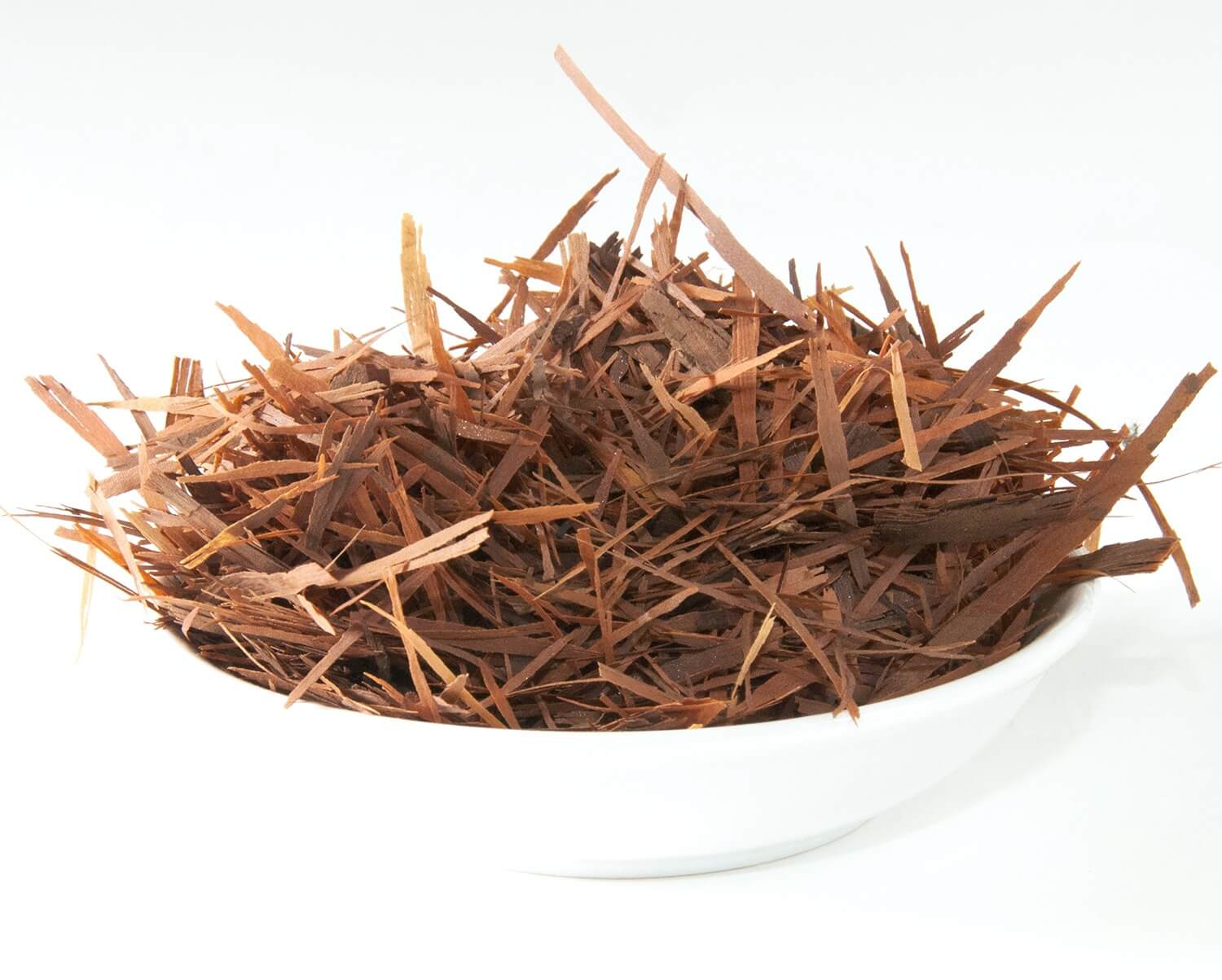Pau d’arco refers to several species of Tabebuia trees and to a dietary supplement made from their inner bark. Limited studies examining its uses and safety indicate it might possess anti-inflammatory, antimicrobial, and anticancer actions.

Also called taheebo or lapacho, pau d’arco has a long history of use across various cultures as a traditional remedy for numerous ailments. In the U.S. supplement market, it’s often promoted for reducing inflammation and aiding weight management.
Origin, traditional uses, and proposed benefits of pau d’arco
Pau d’arco is the common label for a group of Tabebuia tree species native to the tropical rainforests of Central and South America. These trees can reach heights of up to about 125 feet and typically produce pink-to-purple blossoms.
The inner bark of these trees is the part most commonly used. Indigenous peoples of Central and South America have historically used it to address digestive, skin, and inflammatory problems. Still, scientific evidence supporting these traditional uses is limited.
Pau d’arco contains several bioactive compounds that may have clinical relevance, including:
- naphthoquinones — primarily lapachol and its derivative beta-lapachone
- quercetin
- flavonoids
- phenolic acids
- fatty acids
Research into pau d’arco and its constituents has important limitations: many experiments are performed in vitro, which may not reflect effects in humans, and studies vary considerably in their methods and the concentrations of compounds tested.
What studies reveal about pau d’arco and its constituents
Although pau d’arco supplements are frequently marketed as aids for weight loss, there’s no clinical evidence supporting these assertions.
Moreover, dietary supplements in the U.S. are not subject to the same safety and efficacy oversight as prescription drugs, so consumers should exercise caution when using these products. If you’re researching topical or internal uses of herbal remedies, resources on related therapies such as castor oil and the castor oil pack can sometimes appear alongside pau d’arco in integrative-health discussions, though they serve different purposes.
Early research on pau d’arco’s components suggests they may have anti-inflammatory, anticancer, antimicrobial, and other protective effects.
For instance, an in vitro study of beta-lapachone on colorectal cancer cells resistant to chemotherapy showed the compound suppressed the growth of those cells and reduced levels of certain proteins linked to cancer cell proliferation and survival.
However, investigators did not fully elucidate the mechanisms behind these effects, and because the work was conducted in vitro, the findings may not translate directly to humans.
A 2021 comprehensive review reported that beta-lapachone may exhibit anticancer, antimicrobial, neuroprotective, and cardiovascular therapeutic potential. The review highlighted that beta-lapachone inhibited tumor growth and reduced metastasis in cell and animal models. It also noted possible synergistic effects when beta-lapachone is combined with other anticancer agents.
The same review indicated that beta-lapachone is active against bacteria and fungi, which could be relevant for treating certain infections. The compound may also protect neuronal cells, diminish oxidative stress, and lower inflammation, suggesting possible roles in conditions such as heart disease, dementia, and Parkinson’s disease.
A 2020 review found that beta-lapachone consistently demonstrated anti-inflammatory effects in animal and in vitro studies, which might be promising for inflammatory disorders like arthritis, asthma, and inflammatory bowel disease (IBD).
Another study reported that alpha-lapachone and beta-lapachone contribute to wound repair by accelerating cell migration, which aids tissue regeneration, and by stimulating production of proteins involved in the healing process.
Quercetin is another notable component of pau d’arco. A review of research on quercetin’s potential health effects suggested this compound may:
- decrease inflammation
- protect cells from oxidative damage (antioxidant effect)
- support immune function
- help lower blood pressure
- reduce cholesterol
- inhibit cancer cell growth
While findings about pau d’arco’s constituents are encouraging, most studies have been performed in laboratory settings and do not capture the complexity of the human body or differences between individuals.
There is also a scarcity of data on the safety and adverse effects of these compounds, and very little research focused specifically on pau d’arco supplements or products.
Possible risks and adverse effects of pau d’arco
Because human clinical trials are lacking, pau d’arco products should be approached cautiously and ideally used under medical guidance to reduce the risk of harmful effects such as:
- drug interactions
- toxicity
- damage to internal organs
- overdose
Pau d’arco is considered possibly unsafe when taken orally, particularly at high doses. Reported side effects can include:
- severe nausea
- severe diarrhea
- severe vomiting
- dizziness
- internal bleeding
Pau d’arco may affect blood clotting, so people with bleeding disorders or those scheduled for surgery should avoid it. Pregnant and breastfeeding individuals are also advised not to use pau d’arco products.
Bottom line
Current research on pau d’arco and its active constituents is limited and largely restricted to laboratory and animal studies.
Given this limited evidence and the fact that supplements in the U.S. are not tightly regulated for safety and efficacy, it’s important to consult a healthcare professional before using any pau d’arco products.


















Leave a Reply
You must be logged in to post a comment.